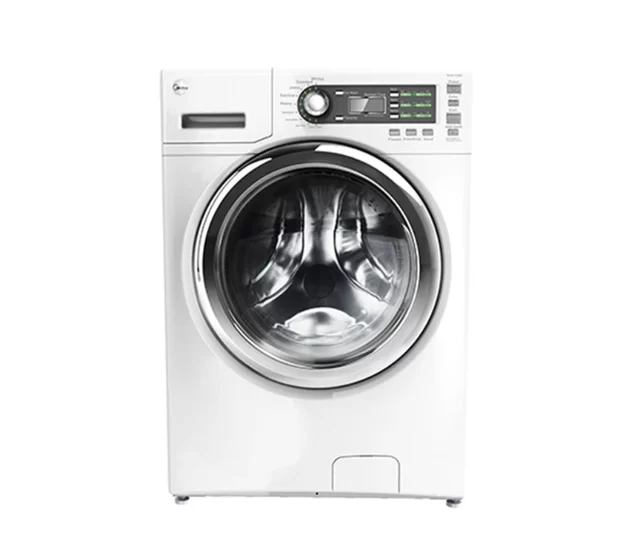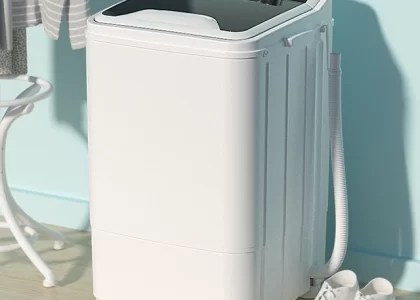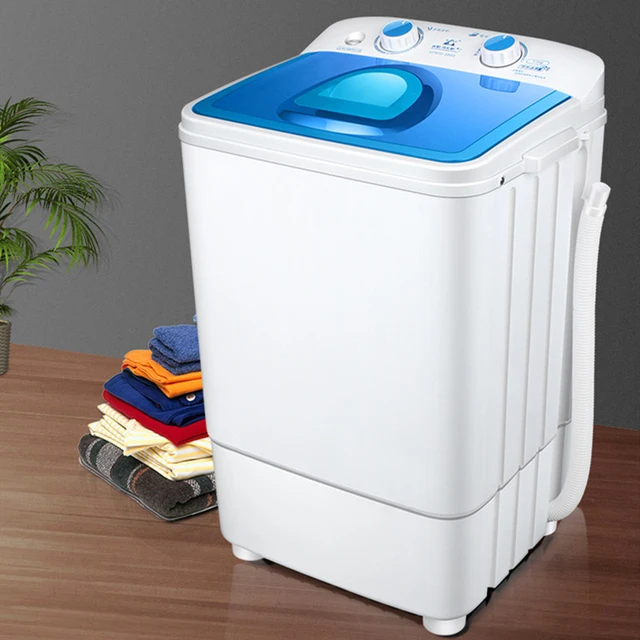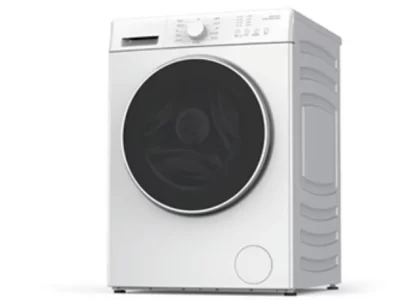 Introduction:
Introduction:
Discovering a leak from the bottom of your front-load washing machine can be a frustrating and concerning issue. In this comprehensive guide, we will explore the various causes of leaks in front-load washing machines and provide possible solutions. By understanding these causes and taking appropriate actions, you can address the problem and prevent further damage to your appliance and surrounding area.
 Here are some common types of washing machines:
Here are some common types of washing machines:
There are various types of washing machines available to cater to different needs and preferences. Here are some common types of washing machines:
Top-Load Washing Machine:
In a top-load washing machine, the laundry is loaded from the top of the machine. This type of washing machine is typically more affordable and has a larger capacity. It is also easier to add or remove clothes during a wash cycle. Some top-load machines have agitators, which help with cleaning, while others have impellers or pulsators that create a gentle and efficient washing action.
Front-Load Washing Machine:
In a front-load washing machine, the laundry is loaded from the front. These machines are known for their energy efficiency and water-saving capabilities as they use less water compared to top-load machines. Front-load washers generally have larger capacities and provide better cleaning performance. They are also gentler on clothes as they do not have an agitator.
Semi-Automatic Washing Machine:
Semi-automatic washing machines require manual intervention during the washing process. They have separate tubs for washing and spinning. With a semi-automatic machine, you need to manually fill the washing tub with water, add detergent, set the timer, and transfer the clothes from the washing tub to the spinning tub after the wash cycle is complete.
Fully Automatic Washing Machine:
Fully automatic washing machines handle the complete washing process automatically, from filling water to washing, rinsing, and spinning. They come in both top-load and front-load configurations. Fully automatic machines offer convenience and a range of advanced features such as different wash programs, load sensing, timers, and more.
High-Efficiency (HE) Washing Machine:
High-efficiency washing machines, commonly found in front-load configurations, are designed to use less water and energy while still providing effective cleaning results. These machines typically have special features to optimize water usage and require specially formulated high-efficiency detergents.
Compact Washing Machine:
Compact washing machines are smaller, space-saving options ideal for apartments, small homes, or limited laundry spaces. They are available in both top-load and front-load configurations and offer compact and efficient washing capabilities.
When choosing a washing machine, consider factors such as the available space, required capacity, desired features, energy efficiency, and budget. Each type of washing machine has its advantages and drawbacks, so it’s important to select one that suits your specific needs and preferences.
 Common Causes of Leaks in Front-Load Washing Machines
Common Causes of Leaks in Front-Load Washing Machines
Faulty Door Seal or Gasket:
A worn-out or damaged door seal or gasket is a common cause of leaks.
Inspect the seal for cracks, tears, or signs of deterioration.
Clogged or Damaged Drain Hose:
A clogged or damaged drain hose can lead to leaks.
Check for any blockages or kinks in the drain hose and ensure it is properly connected.
Defective Water Inlet Valve:
A malfunctioning water inlet valve can cause water to leak during the fill cycle.
Inspect the valve for signs of wear or damage and ensure it is securely connected.
 Troubleshooting and Resolving Leaks
Troubleshooting and Resolving Leaks
Inspecting and Cleaning the Door Seal/Gasket:
Thoroughly examine the door seal/gasket for any visible damage.
Clean the seal/gasket with a mild detergent and a soft cloth to remove dirt or debris.
Replacing the Door Seal/Gasket:
If the door seal/gasket is severely damaged, it may need to be replaced.
Follow the manufacturer’s instructions or seek professional help for the replacement process.
Checking and Clearing the Drain Hose:
Disconnect the drain hose and inspect it for clogs or damage.
Use a plumber’s snake or a pipe cleaner to clear any obstructions.
Repairing or Replacing the Drain Hose:
If the drain hose is damaged, it may need to be repaired or replaced.
Consider consulting a professional technician or following the manufacturer’s guidelines for repair or replacement.
Examining and Repairing the Water Inlet Valve:
Inspect the water inlet valve for any signs of wear, damage, or loose connections.
Repair or replace the valve if necessary, following the manufacturer’s instructions or seeking professional help.
Preventive Measures and Maintenance Tips
Regular Cleaning and Maintenance:
Clean the drum, detergent dispenser, and other components to prevent buildup that could cause leaks.
Follow the manufacturer’s guidelines for cleaning and maintenance.
Proper Loading and Balance:
Avoid overloading the washing machine, as it can put strain on the components and potentially cause leaks.
Distribute the load evenly to maintain balance during the spin cycle.
Check for Leveling Issues:
Ensure that the washing machine is level using a spirit level.
Adjust the feet of the appliance if necessary to maintain proper balance.
Using the Right Detergent:
Use a high-efficiency (HE) detergent specifically designed for front-load washing machines.
Using excessive detergent can cause excessive sudsing and leaks.
Correct steps for using a front-load washing machine:
Sort and Prepare the Laundry:
Separate your laundry by color, fabric type, and level of dirtiness. Empty pockets and zip up zippers to avoid any damage during the wash.
Load the Laundry:
Open the front door of the washing machine and load the laundry into the drum. Be sure not to overload the machine, as it can affect washing performance and efficiency.
Add Detergent:
Measure the appropriate amount of detergent according to the manufacturer’s instructions. Use a detergent specifically formulated for front-load washing machines. Add the detergent to the designated detergent dispenser or directly into the drum.
Select Wash Cycle and Adjust Settings:
Choose the desired wash cycle, water temperature, spin speed, and any additional settings, such as pre-wash or extra rinse. Each machine may have different options, so refer to the user manual for guidance.
Start the Wash Cycle:
Close the door securely and press the start button to begin the wash cycle. The machine will fill with water, agitate or tumble the laundry, and continue through the selected cycle stages.
Optional: Add Fabric Softener or Other Additives:
If desired, follow the manufacturer’s instructions to add fabric softener or other laundry additives. Some machines have dedicated dispensers for these substances.
Monitor the Wash Cycle:
Keep an eye on the machine during the cycle. If you notice any issues like excessive vibration or unusual noises, pause the wash cycle and consult the user manual for troubleshooting steps.
Unload the Laundry:
Once the wash cycle is complete, open the door and remove the laundry promptly. Leaving damp clothes in the machine for an extended period can lead to odors or mildew.
Clean and Maintain the Machine:
Occasionally, run a cleaning cycle using a washing machine cleaner or a mixture of vinegar and baking soda to remove any residue and keep the machine functioning optimally. Wipe the rubber seal and drum to prevent mold or odor buildup.
Following these steps will help ensure the correct and effective use of a front-load washing machine. It’s essential to refer to the specific instructions provided by the manufacturer for your machine model, as features and settings can vary.
 Conclusion:
Conclusion:
A leaking front-load washing machine can be a troublesome issue, but by identifying the causes and taking appropriate actions, you can address the problem effectively. Whether it’s a faulty door seal, clogged drain hose, or defective water inlet valve, proper inspection and relevant repairs or replacements can resolve the issue. Additionally, following preventive measures and regular maintenance practices can help prevent leaks in the future. By maintaining a functional front-load washing machine, you can enjoy clean and worry-free laundry experiences. If in doubt or if the issue persists, it’s advisable to seek professional assistance to ensure the proper functioning of your appliance.





